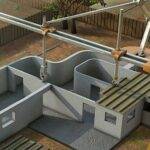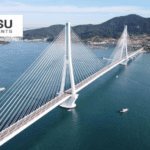10 Groundbreaking Techniques in Structural Design Engineering You Need to Know
In the ever-evolving field of structural design engineering, several innovative techniques have gained prominence over the years. These cutting-edge methods have revolutionized the way we create and construct buildings, bridges, and other structures. It’s important to note that engineering advancements continue to emerge, leading to new techniques and advancements since the time of this article’s writing. Let’s delve into some of the groundbreaking techniques that have left a lasting impact on the industry.
1. Advanced Composite Materials
- Composite materials, such as carbon fibers and high-performance polymers, have opened up exciting possibilities in structural design engineering.
- By combining these materials, engineers can produce structures that are lighter, stronger, and more durable than ever before.
- These advanced composites offer excellent resistance to corrosion, fatigue, and external forces, making them ideal for various applications.
2. Parametric Design
- Parametric design, a technique driven by algorithms, allows engineers to automate the entire design process.
- By defining a set of parameters and constraints, designers can generate numerous design options quickly.
- This approach facilitates efficient exploration of different design possibilities while considering factors like cost, materials, and structural performance.
3. Building Information Modeling (BIM)
- BIM has transformed the way structural design engineering projects are executed.
- This digital methodology enables collaboration across different disciplines, streamlining the entire construction process.
- By creating a virtual representation of the structure, BIM allows stakeholders to visualize, analyze, and identify potential issues before construction begins.
4. Passive Design Strategies
- Passive design strategies focus on optimizing the building’s orientation, insulation, and natural ventilation to minimize energy consumption.
- By leveraging the surroundings, engineers can design structures that reduce the need for mechanical heating and cooling systems.
- These strategies aim to enhance occupant comfort while reducing the overall environmental impact of the building.
5. Seismic Design Techniques
- Seismic design techniques play a crucial role in earthquake-prone regions.
- Engineers employ various strategies, such as base isolation and energy dissipation systems, to enhance a structure’s resilience against seismic events.
- Through careful analysis and design, these techniques mitigate the damaging effects of earthquakes, safeguarding both lives and infrastructure.
6. 3D Printing in Construction
- The advent of 3D printing has introduced a new paradigm in construction and structural design engineering.
- By using additive manufacturing techniques, engineers can create intricate and customized structural components with unparalleled precision.
- This technology not only reduces material waste but also offers cost-effective and time-efficient solutions for construction projects.
7. Smart Structural Health Monitoring
- Smart structural health monitoring systems utilize various sensors to assess the condition of a structure in real-time.
- By continuously monitoring factors like stress, strain, and vibrations, engineers can proactively identify potential issues and implement necessary maintenance measures.
- These systems provide valuable data for structural assessments, ensuring the long-term safety and performance of the structure.
8. High-Performance Concrete
- High-performance concrete offers superior strength, durability, and impermeability compared to conventional concrete.
- Combining advanced admixtures, optimized particle size distribution, and meticulous curing techniques, engineers can enhance concrete’s properties.
- Structures built with high-performance concrete can withstand harsh weather conditions, chemical exposure, and heavy loads, making them ideal for critical infrastructure projects.
9. Adaptive Façade Systems
- Adaptive façade systems are designed to dynamically respond to external conditions, optimizing energy efficiency and occupant comfort.
- Incorporating technologies like smart glass, solar shading, and automated ventilation, these systems adapt to changes in temperature, light, and air quality.
- By intelligently controlling these elements, engineers can create buildings that maximize natural resources while minimizing energy consumption.
10. Sustainable Structural Design Principles
- Sustainable design principles have become paramount in modern structural design engineering.
- Engineers strive to minimize the environmental impact of structures by integrating renewable energy sources, efficient insulation systems, and responsible material selection.
- By considering the life cycle of a structure and its ongoing environmental footprint, sustainable design practices provide long-term benefits for both the built environment and the planet.
While these ten groundbreaking techniques in structural design engineering have certainly made a significant impact, it’s important to acknowledge that the field continues to evolve rapidly. As engineers push the boundaries of innovation, we can expect even more exciting advancements in the future. Embracing these techniques and staying informed about emerging trends will undoubtedly prove invaluable for professionals in the dynamic world of structural design engineering.
Disclaimer: This content is provided solely for your review. Erusu Consultants takes no liability for this article. The reader is advised to form their own opinion. Please consult a Structural Engineer before making any final decisions.







Engineering Consultancy Services
October 25, 2023Thankyou for sharing the Groundbreaking Techniques of Engineering information it is useful.